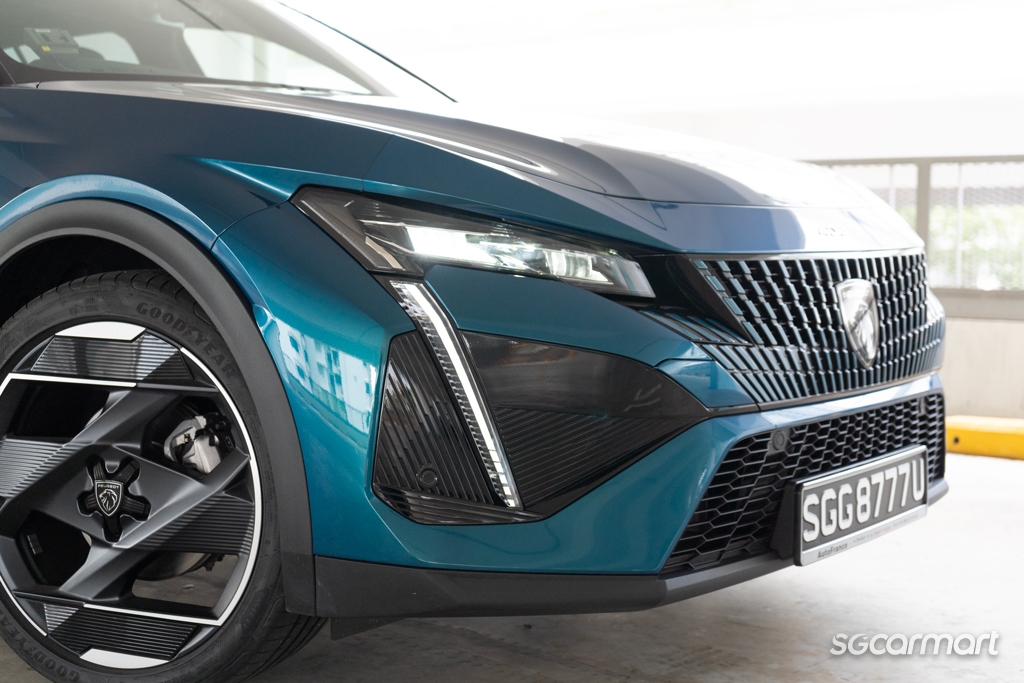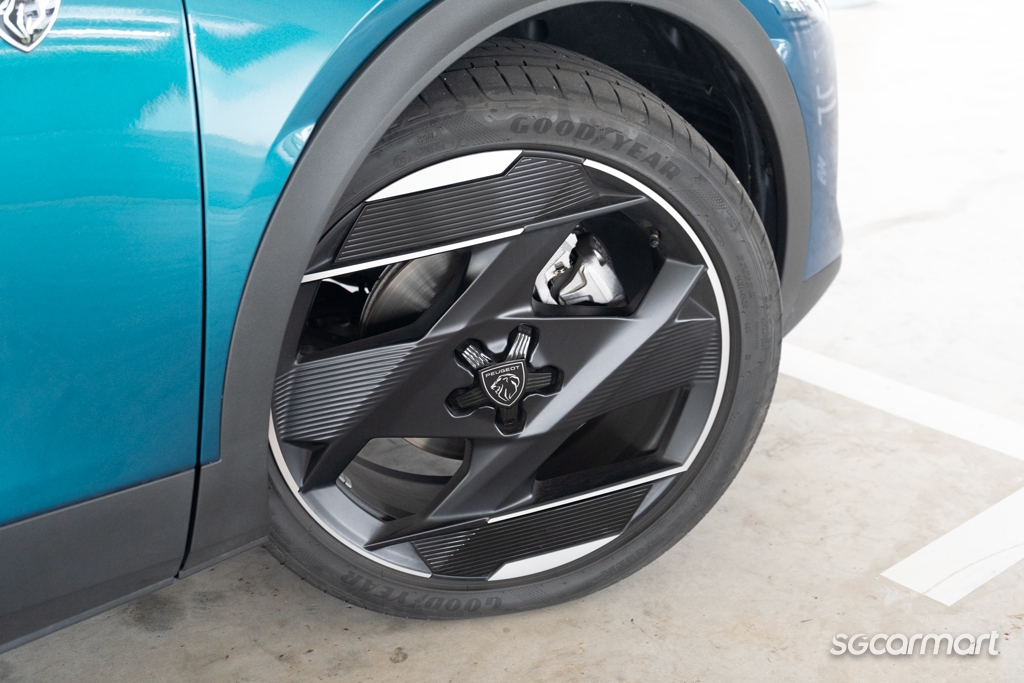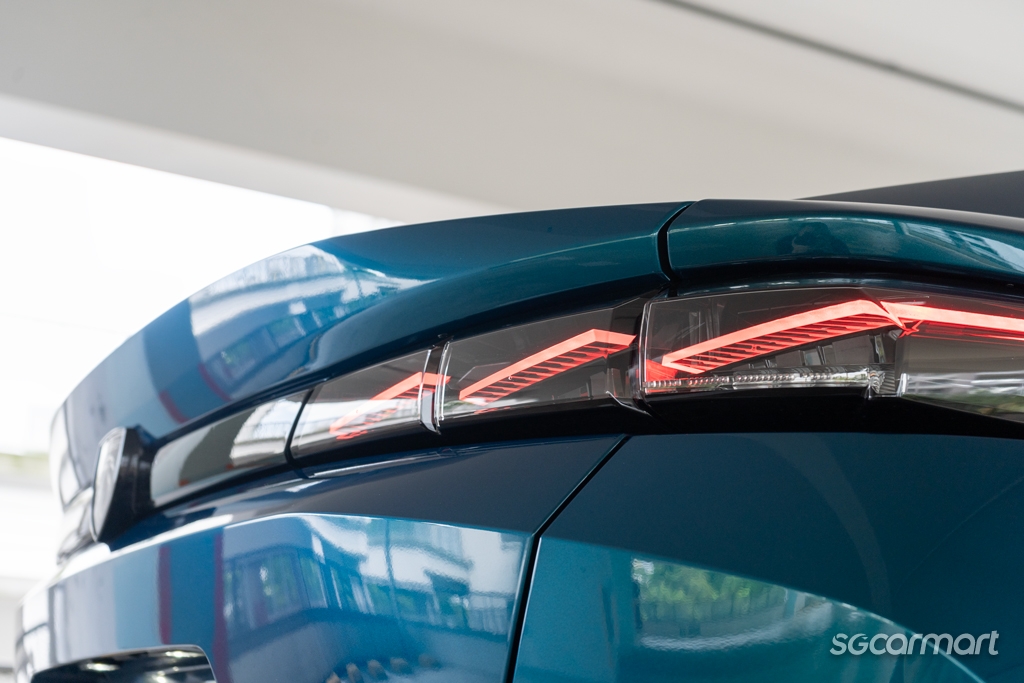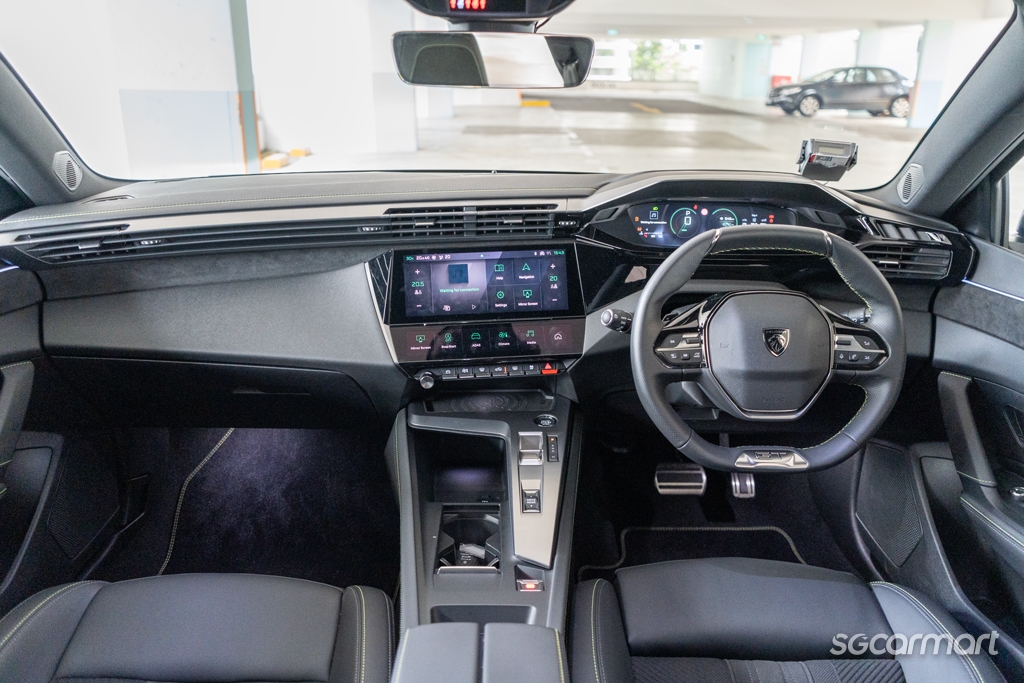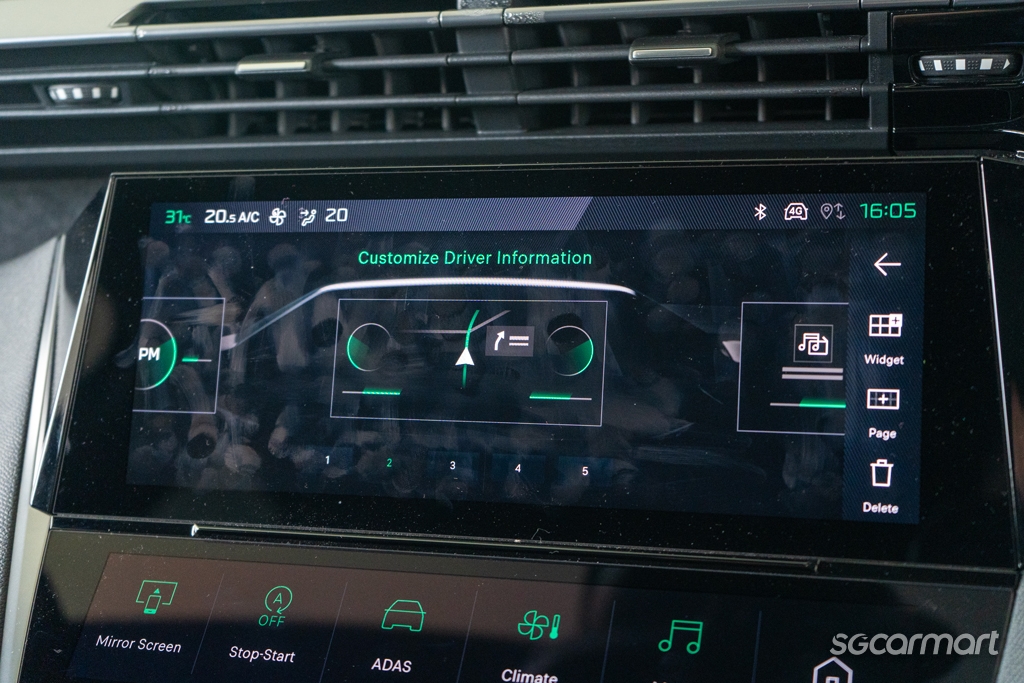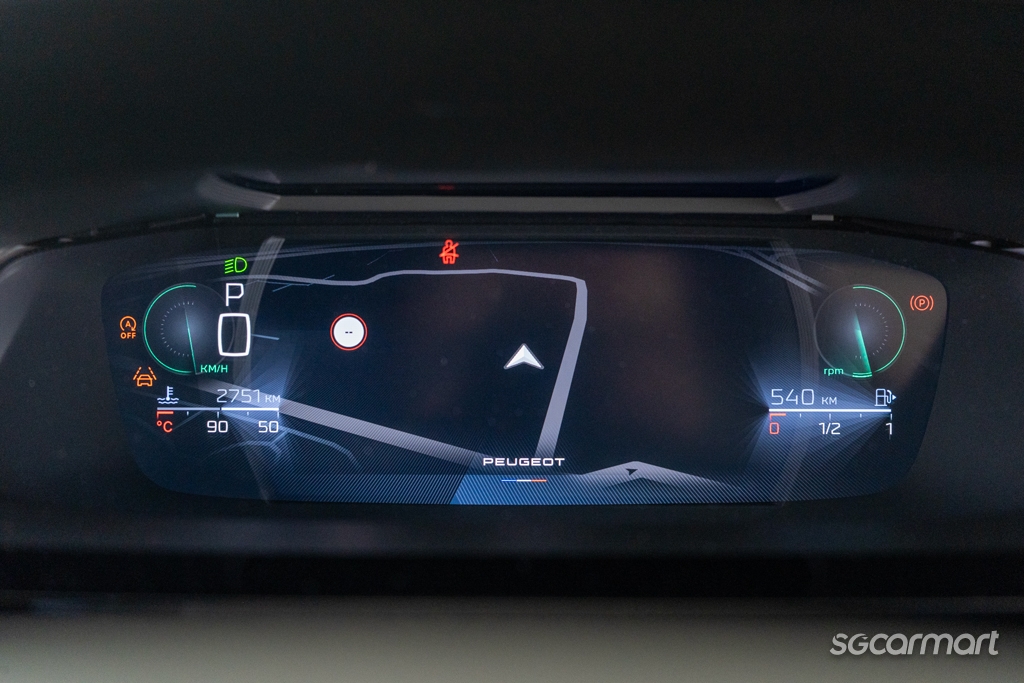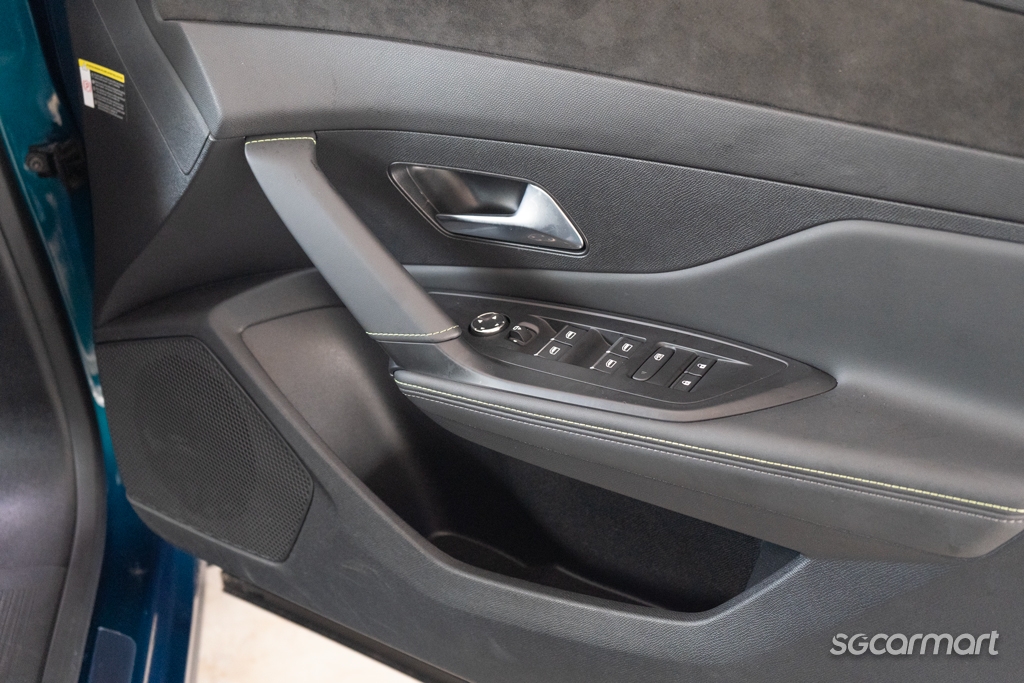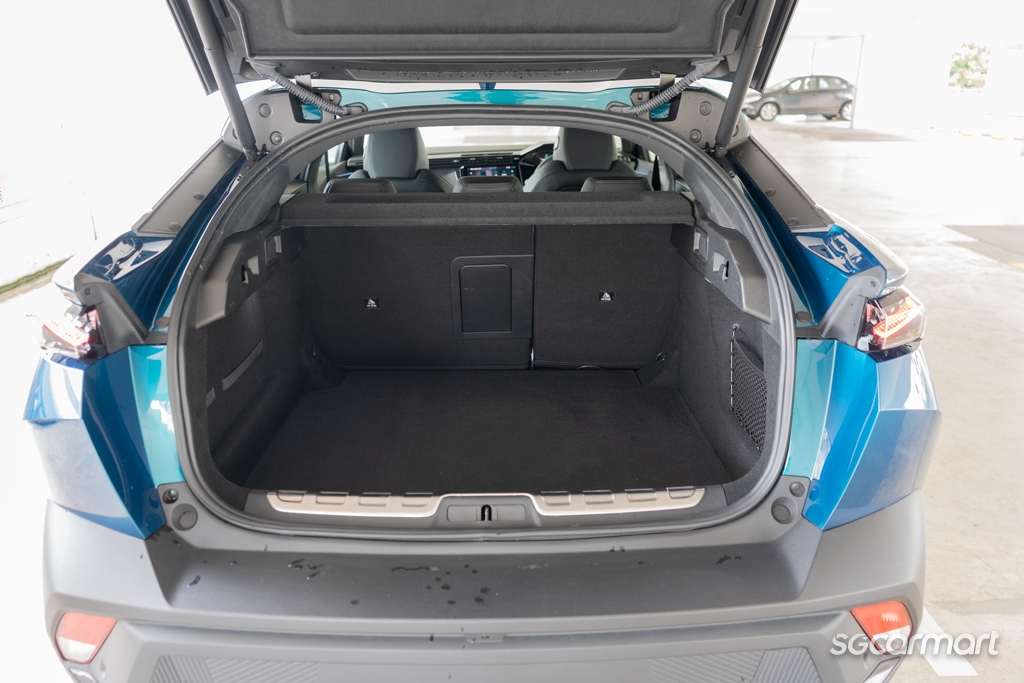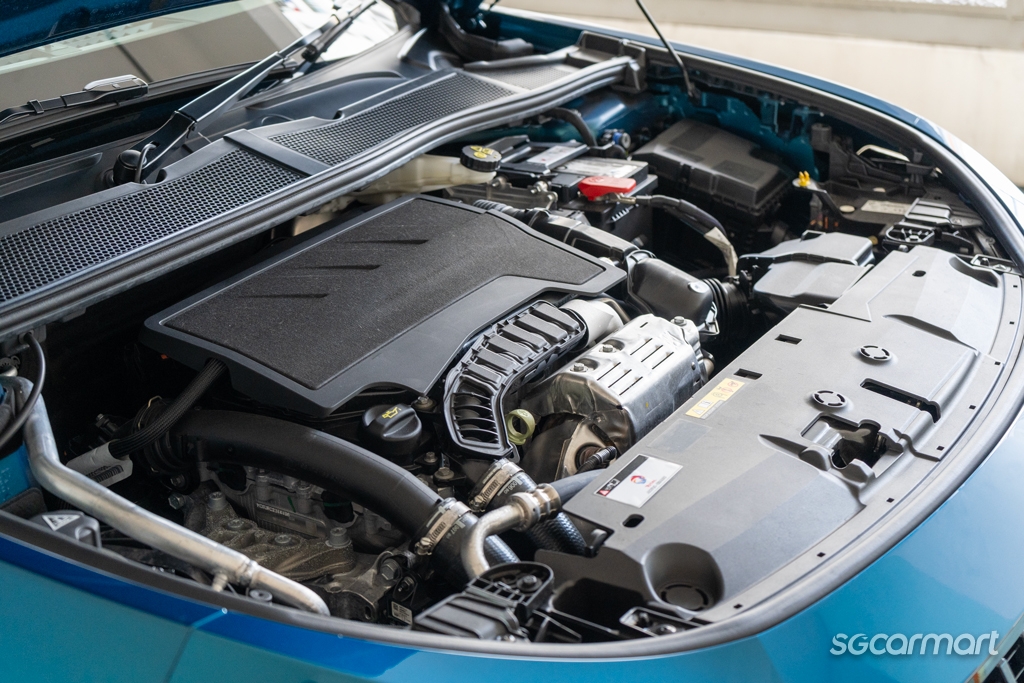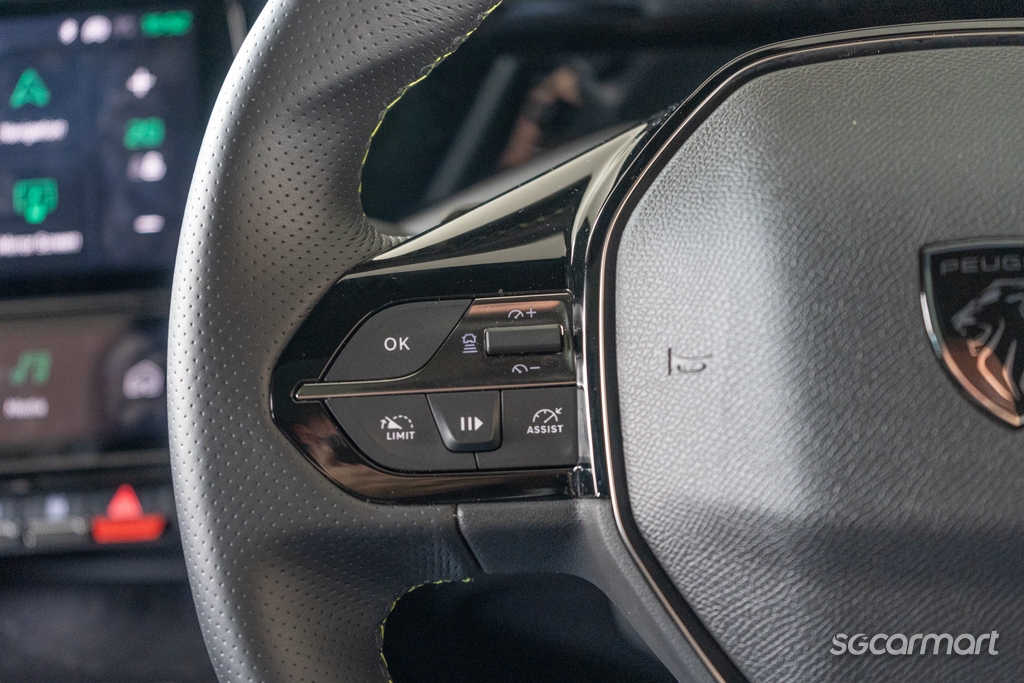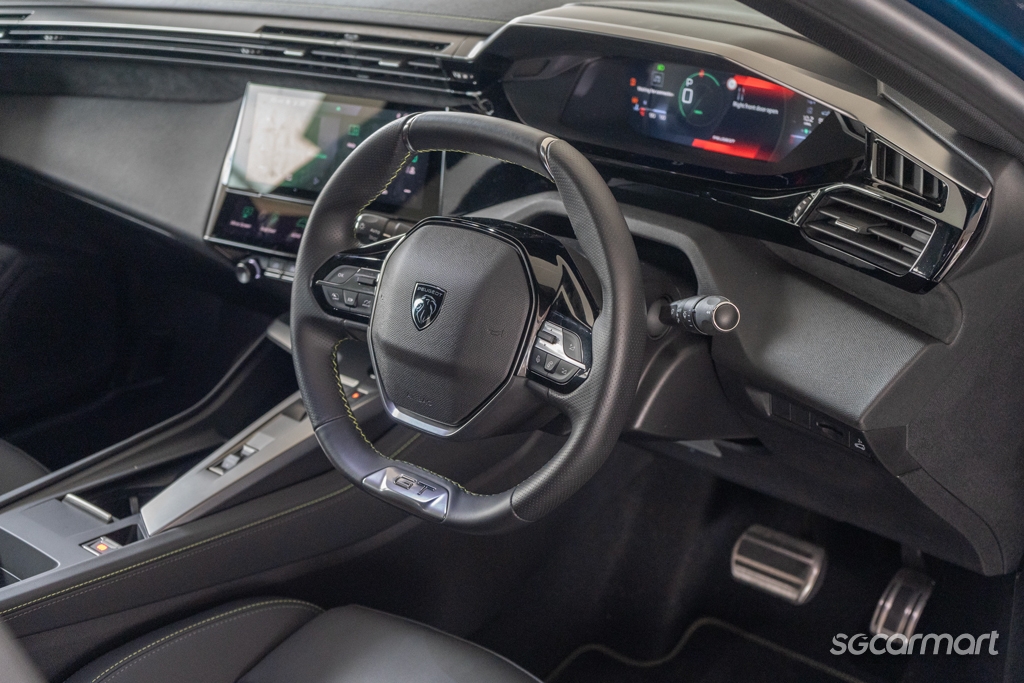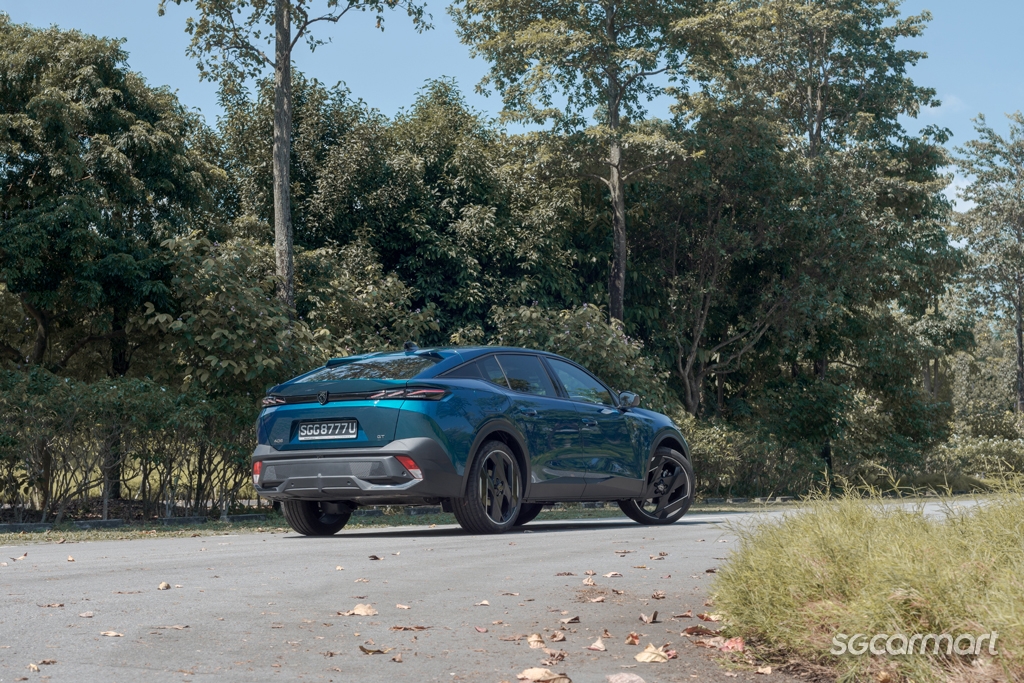Peugeot 408 GT Review
29 Aug 2023|31,443 views
What We Like
Distinctive design
Practical fastback body style
Lots of storage points
Snazzy cockpit
Long list of driver assistance and safety features
What We Dislike
Large C-pillar blind spots
Needs more progressive brakes
Rather relaxed performance
If you've never worn a suit before, chances are your first time donning one will feel awkward. Wearing a suit can feel restrictive, especially if you're used to looser-fitting clothes.
However, if the suit is well-tailored, it'll feel like an extension of yourself and almost like a second skin. That restricted feeling instead makes you walk with extra confidence, as you stand taller and straighter, knowing that you look sharper than before.
That's exactly what driving the Peugeot 408 feels like. It seems odd and unfamiliar at first, but the longer you drive it, the more instinctive it becomes, and the more confident you'll feel behind the wheel.
Peugeot's new body style
SUVs continue to be the type of car preferred by consumers everywhere. Indeed, most of the models in Peugeot's local lineup are also SUVs. Prior to the 408's arrival, only the 508 is a saloon.
Yet this hasn't stopped the French carmaker, which belongs to the Stellantis group, from launching the 408, which has a 'fastback-crossover' body style.
According to Christophe Musy, Stellantis Senior Vice-President for ASEAN, Peugeot wanted to bring a model aimed at consumers who have grown tired of SUVs and are looking for something "lower, less boxy, and with better handling".
He should have mentioned the avant-garde design, too, because right off the bat, the 408's distinctive styling ensured that it resembles no other car on the road today.
Looks are subjective, but this car draws glances everywhere it goes. Be it pedestrians crossing the road or other drivers in a carpark, the 408 never fails to attract attention. Even toddlers in prams have sat up to check out the car.
Perhaps it's the body-coloured grille and 'fangs' formed by the daytime running lights that folks stare at. But it might also be the car's profile and sloping windscreen, which has a pair of 'cat ears' that direct airflow down to the short rear spoiler.
The taillights are even more interesting. Instead of being intricate, they're quite simple and when viewed from the rear, resemble three short lines. I like the 20-inch asymmetrical wheels, too. But the plastic trim around the car's lower portions should have been painted since this is the range-topping GT variant.
Gallic tech
If you've ever sat in any other current Peugeot model, you'll find the brand's i-Cockpit, which features a pair of high-resolution screens for the instrument panel and infotainment, familiar.
The 408 gets the latest-generation 3D i-Cockpit, which has been improved over the one in the e-2008. The fixed menu shortcuts are replaced by digital ones, but more significant is the fact that they are customisable.
The infotainment menu can also be personalised to the layout of your choosing, and several layout options can be saved.
You can also do this with the instrument panel. You can select the type of info you want displayed across various layouts and save them. You can cycle through the layouts using the button on the indicator stalk.
Customisation is great, but it can become too much of a good thing. My advice to buyers is to ask the salesperson to help you set-up the menus during the collection, so you don't have to revisit the process again.
Anyway, once everything is to your liking, you probably won't tweak it anymore. As an iPhone user, I'm glad Peugeot lets you choose either a wired or wireless connection for CarPlay.
As my iPhone X is old, wireless-only systems cause it to heat up, and wireless charging worsens this. On the other hand, plugging it into the system with a USB-C cable immediately starts CarPlay, charges my phone faster than the wireless charger, and doesn't cause it to heat up.
Door bins can easily hold a large water bottle, while the cavernous boot lends itself well to those moving house
Practical considerations
The 408 is convenient in many other ways, too. The storage points, especially by the doors, are relatively large, the bin below the armrest is deep, and there's a sizable niche in front of the USB-C port.
Passenger comfort is tops as well, thanks to the cushy-yet-supportive seats. With Opel now part of Stellantis, Peugeot has adopted its German cousin's penchant for having seats approved by AGR (Aktion fur Gesunder Rucken), a German association for back health experts.
The rear seats are equally cushy, too, although the shorter backrests mean you'll need to raise the headrests to be comfortable. And thanks to the 2,735mm wheelbase, legroom and foot space are generous.
One of the coolest things about fastbacks is that they typically offer lots of boot space. The 408 doesn't disappoint. Since it's longer than the 3008, it has greater capacity - 536 litres with the rear seatbacks up and 1,611 litres when they're folded. A full-size bike can easily fit here.
A relaxed pace
Motivating the 408 is the familiar turbocharged 1.2-litre three-cylinder unit that also does duty in the 2008, 3008 and 5008 models. In the 408, the engine pumps out 129bhp and 230Nm of torque, with the latter figure available from just 1,750rpm.
The paper figures seem perky enough, but the 408's character is more relaxed than expected, with the benchmark century sprint taking 11.5 seconds to complete. That's 0.6 of a second slower than the 3008, which has the same powertrain and weighs 72kg less.
The good news though, is that the car's response is linear and hence predictable, and the three-pot motor sounds just as rorty here as it does in other Peugeot models.
One thing you'll have to get used to, however, is the position of the steering wheel. Most drivers must set it low enough such that the top part covers 'Peugeot' on the instrument cluster, to avoid obscuring the panel altogether.
It may seem odd or even annoying at first, but after a while, the unconventional position becomes natural. And thanks to the steering wheel's compactness, twirling it takes less effort, especially when hunting for a space in a multi-storey carpark.
Complementing the easy-going character is the relatively pliant ride. The 20-inch wheels on the 408 GT don't affect this, but if you're more sensitive than most, perhaps the 408 Allure and its 18-inch wheels may be more appealing.
On the go, the 408 easily mitigates undulations - neither the missus nor my colleagues ever said the ride was uncomfortable. Handling clearly took a backseat here, for rather than being point-y, the 408 plays it safe with its neat manners.
The way the brakes bite could be neater and more progressive, though. Perhaps the car is new, but unless you consciously modulate your foot's efforts, the vehicle tends to lurch forward just as it comes to a stop.
Ponder this
So, the 408 isn't as quick or nimble as its dynamic fastback body style might suggest. What it does deliver is French motoring, Peugeot style. It's an inviting blend of advanced technology, generous space and practicality, presented with Gallic panache.
That said, it's also a car that takes getting used to. Its cockpit ergonomics and braking behaviour feel odd and unfamiliar at first, sort of like a suit sewn by a French tailor.
But the more you wear it, the more becomes like a second skin. And just like any good suit, it makes its owner feel happier and more confident each time it's worn.
Looking for other fastback reviews? These stories may interest you
Skoda Octavia 1.0 has less power, but offers plenty of practicality and value
Polestar 2 Long Range Single Motor is a highly functional and modern-looking fastback
What We Like
Distinctive design
Practical fastback body style
Lots of storage points
Snazzy cockpit
Long list of driver assistance and safety features
What We Dislike
Large C-pillar blind spots
Needs more progressive brakes
Rather relaxed performance
If you've never worn a suit before, chances are your first time donning one will feel awkward. Wearing a suit can feel restrictive, especially if you're used to looser-fitting clothes.
However, if the suit is well-tailored, it'll feel like an extension of yourself and almost like a second skin. That restricted feeling instead makes you walk with extra confidence, as you stand taller and straighter, knowing that you look sharper than before.
That's exactly what driving the Peugeot 408 feels like. It seems odd and unfamiliar at first, but the longer you drive it, the more instinctive it becomes, and the more confident you'll feel behind the wheel.
Peugeot's new body style
SUVs continue to be the type of car preferred by consumers everywhere. Indeed, most of the models in Peugeot's local lineup are also SUVs. Prior to the 408's arrival, only the 508 is a saloon.
Yet this hasn't stopped the French carmaker, which belongs to the Stellantis group, from launching the 408, which has a 'fastback-crossover' body style.
According to Christophe Musy, Stellantis Senior Vice-President for ASEAN, Peugeot wanted to bring a model aimed at consumers who have grown tired of SUVs and are looking for something "lower, less boxy, and with better handling".
He should have mentioned the avant-garde design, too, because right off the bat, the 408's distinctive styling ensured that it resembles no other car on the road today.
Looks are subjective, but this car draws glances everywhere it goes. Be it pedestrians crossing the road or other drivers in a carpark, the 408 never fails to attract attention. Even toddlers in prams have sat up to check out the car.
Perhaps it's the body-coloured grille and 'fangs' formed by the daytime running lights that folks stare at. But it might also be the car's profile and sloping windscreen, which has a pair of 'cat ears' that direct airflow down to the short rear spoiler.
The taillights are even more interesting. Instead of being intricate, they're quite simple and when viewed from the rear, resemble three short lines. I like the 20-inch asymmetrical wheels, too. But the plastic trim around the car's lower portions should have been painted since this is the range-topping GT variant.
Gallic tech
If you've ever sat in any other current Peugeot model, you'll find the brand's i-Cockpit, which features a pair of high-resolution screens for the instrument panel and infotainment, familiar.
The 408 gets the latest-generation 3D i-Cockpit, which has been improved over the one in the e-2008. The fixed menu shortcuts are replaced by digital ones, but more significant is the fact that they are customisable.
The infotainment menu can also be personalised to the layout of your choosing, and several layout options can be saved.
You can also do this with the instrument panel. You can select the type of info you want displayed across various layouts and save them. You can cycle through the layouts using the button on the indicator stalk.
Customisation is great, but it can become too much of a good thing. My advice to buyers is to ask the salesperson to help you set-up the menus during the collection, so you don't have to revisit the process again.
Anyway, once everything is to your liking, you probably won't tweak it anymore. As an iPhone user, I'm glad Peugeot lets you choose either a wired or wireless connection for CarPlay.
As my iPhone X is old, wireless-only systems cause it to heat up, and wireless charging worsens this. On the other hand, plugging it into the system with a USB-C cable immediately starts CarPlay, charges my phone faster than the wireless charger, and doesn't cause it to heat up.
Door bins can easily hold a large water bottle, while the cavernous boot lends itself well to those moving house
Practical considerations
The 408 is convenient in many other ways, too. The storage points, especially by the doors, are relatively large, the bin below the armrest is deep, and there's a sizable niche in front of the USB-C port.
Passenger comfort is tops as well, thanks to the cushy-yet-supportive seats. With Opel now part of Stellantis, Peugeot has adopted its German cousin's penchant for having seats approved by AGR (Aktion fur Gesunder Rucken), a German association for back health experts.
The rear seats are equally cushy, too, although the shorter backrests mean you'll need to raise the headrests to be comfortable. And thanks to the 2,735mm wheelbase, legroom and foot space are generous.
One of the coolest things about fastbacks is that they typically offer lots of boot space. The 408 doesn't disappoint. Since it's longer than the 3008, it has greater capacity - 536 litres with the rear seatbacks up and 1,611 litres when they're folded. A full-size bike can easily fit here.
A relaxed pace
Motivating the 408 is the familiar turbocharged 1.2-litre three-cylinder unit that also does duty in the 2008, 3008 and 5008 models. In the 408, the engine pumps out 129bhp and 230Nm of torque, with the latter figure available from just 1,750rpm.
The paper figures seem perky enough, but the 408's character is more relaxed than expected, with the benchmark century sprint taking 11.5 seconds to complete. That's 0.6 of a second slower than the 3008, which has the same powertrain and weighs 72kg less.
The good news though, is that the car's response is linear and hence predictable, and the three-pot motor sounds just as rorty here as it does in other Peugeot models.
One thing you'll have to get used to, however, is the position of the steering wheel. Most drivers must set it low enough such that the top part covers 'Peugeot' on the instrument cluster, to avoid obscuring the panel altogether.
It may seem odd or even annoying at first, but after a while, the unconventional position becomes natural. And thanks to the steering wheel's compactness, twirling it takes less effort, especially when hunting for a space in a multi-storey carpark.
Complementing the easy-going character is the relatively pliant ride. The 20-inch wheels on the 408 GT don't affect this, but if you're more sensitive than most, perhaps the 408 Allure and its 18-inch wheels may be more appealing.
On the go, the 408 easily mitigates undulations - neither the missus nor my colleagues ever said the ride was uncomfortable. Handling clearly took a backseat here, for rather than being point-y, the 408 plays it safe with its neat manners.
The way the brakes bite could be neater and more progressive, though. Perhaps the car is new, but unless you consciously modulate your foot's efforts, the vehicle tends to lurch forward just as it comes to a stop.
Ponder this
So, the 408 isn't as quick or nimble as its dynamic fastback body style might suggest. What it does deliver is French motoring, Peugeot style. It's an inviting blend of advanced technology, generous space and practicality, presented with Gallic panache.
That said, it's also a car that takes getting used to. Its cockpit ergonomics and braking behaviour feel odd and unfamiliar at first, sort of like a suit sewn by a French tailor.
But the more you wear it, the more becomes like a second skin. And just like any good suit, it makes its owner feel happier and more confident each time it's worn.
Looking for other fastback reviews? These stories may interest you
Skoda Octavia 1.0 has less power, but offers plenty of practicality and value
Polestar 2 Long Range Single Motor is a highly functional and modern-looking fastback
Also read our comparison article on:
Peugeot 408 GT 1.2 vs Skoda Octavia 1.0Car Information
Peugeot 408 1.2 EAT8 GT Fastback(A)
$179,999
CAT A|Petrol|17.2km/L
Horsepower
96kW (129 bhp)
Torque
230 Nm
Acceleration
11.5sec (0-100km /hr)
Promotion
The PEUGEOT 408 GT - made to move hearts, built to command attention, and now yours from $179,999 with 10 years free servicing.
Read moreThank You For Your Subscription.
- Introduction
- Technology
- Practicalities
- Performance
- Conclusion

































































